It looks like you're using an Ad Blocker.
Please white-list or disable AboveTopSecret.com in your ad-blocking tool.
Thank you.
Some features of ATS will be disabled while you continue to use an ad-blocker.
share:
Hello fellow ATS aircraft aficionados!
Now, what I have here is a dial obviously taken from an aircraft at some point many years ago. My fiancee found it at a flea market for a couple bucks, knew I was a military buff, and would appreciate an odd aircraft dial. She asked the guy what it was and all he said was it came off an airplane, maybe a military plane. No idea where, how, what or why.

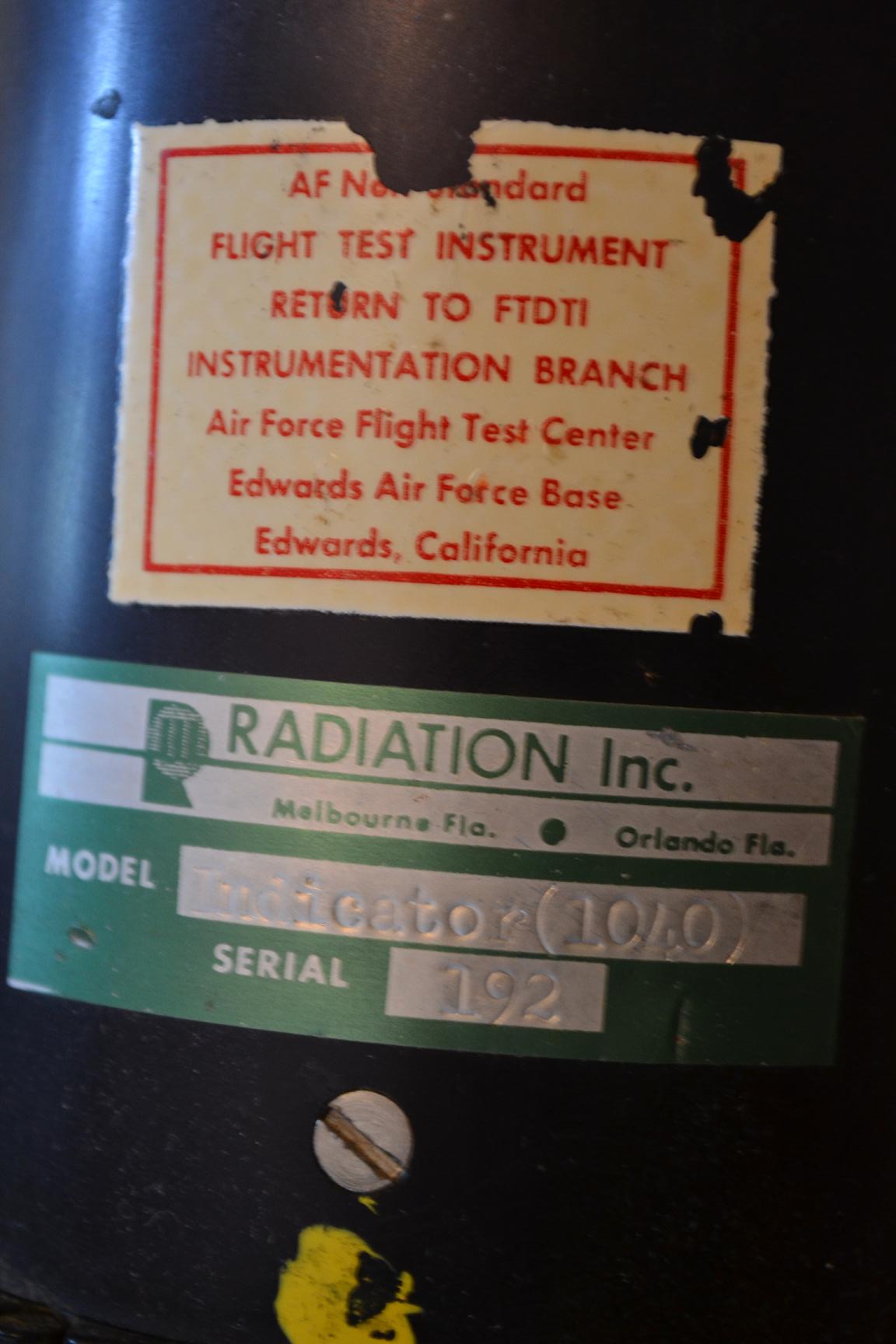
Tag on this one says "Indicator (1040) Serial # 192"
As you can see, the MOST interesting part is the Flight Test Instrument sticker and where it belonged to: Edwards Air Force Base!!
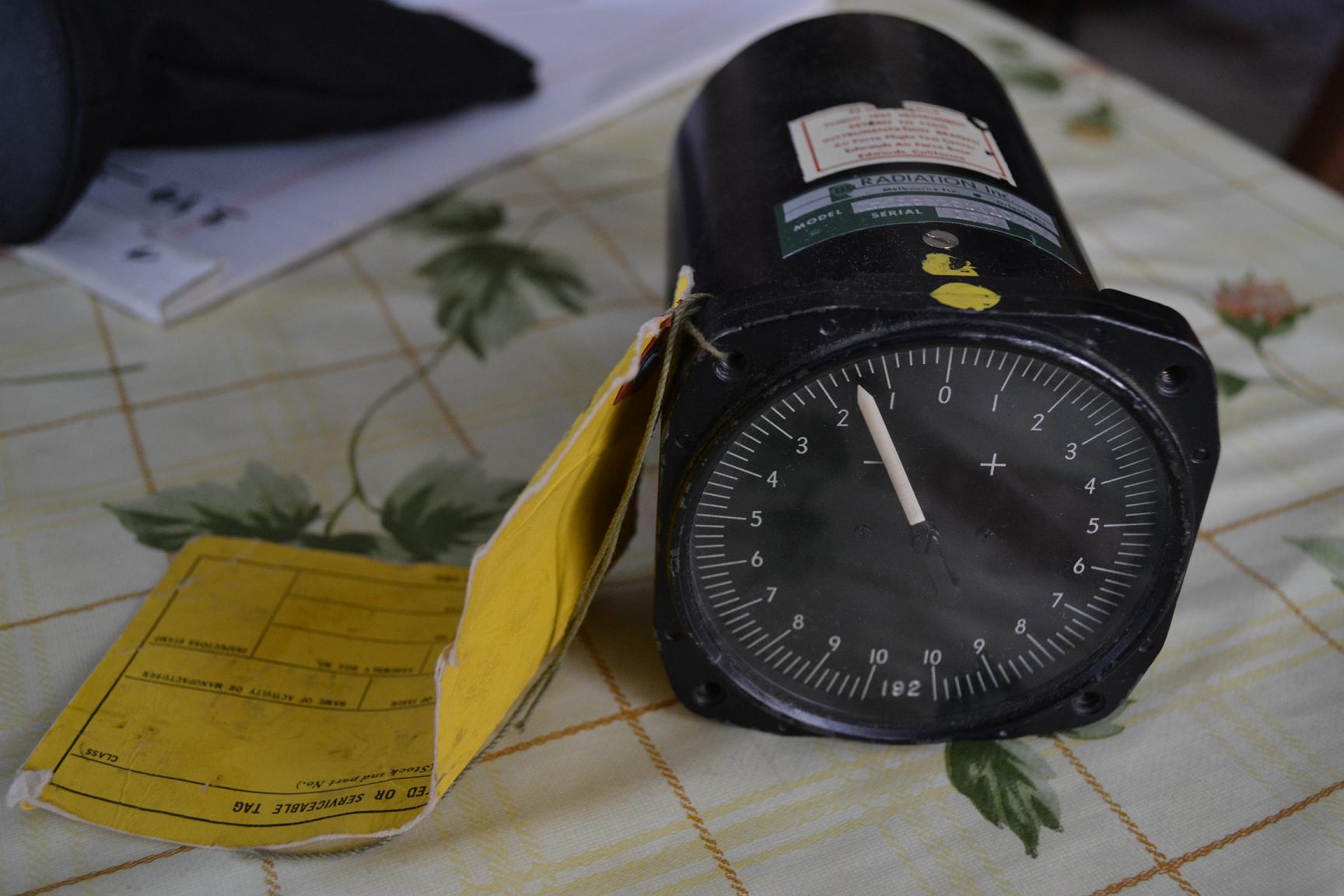
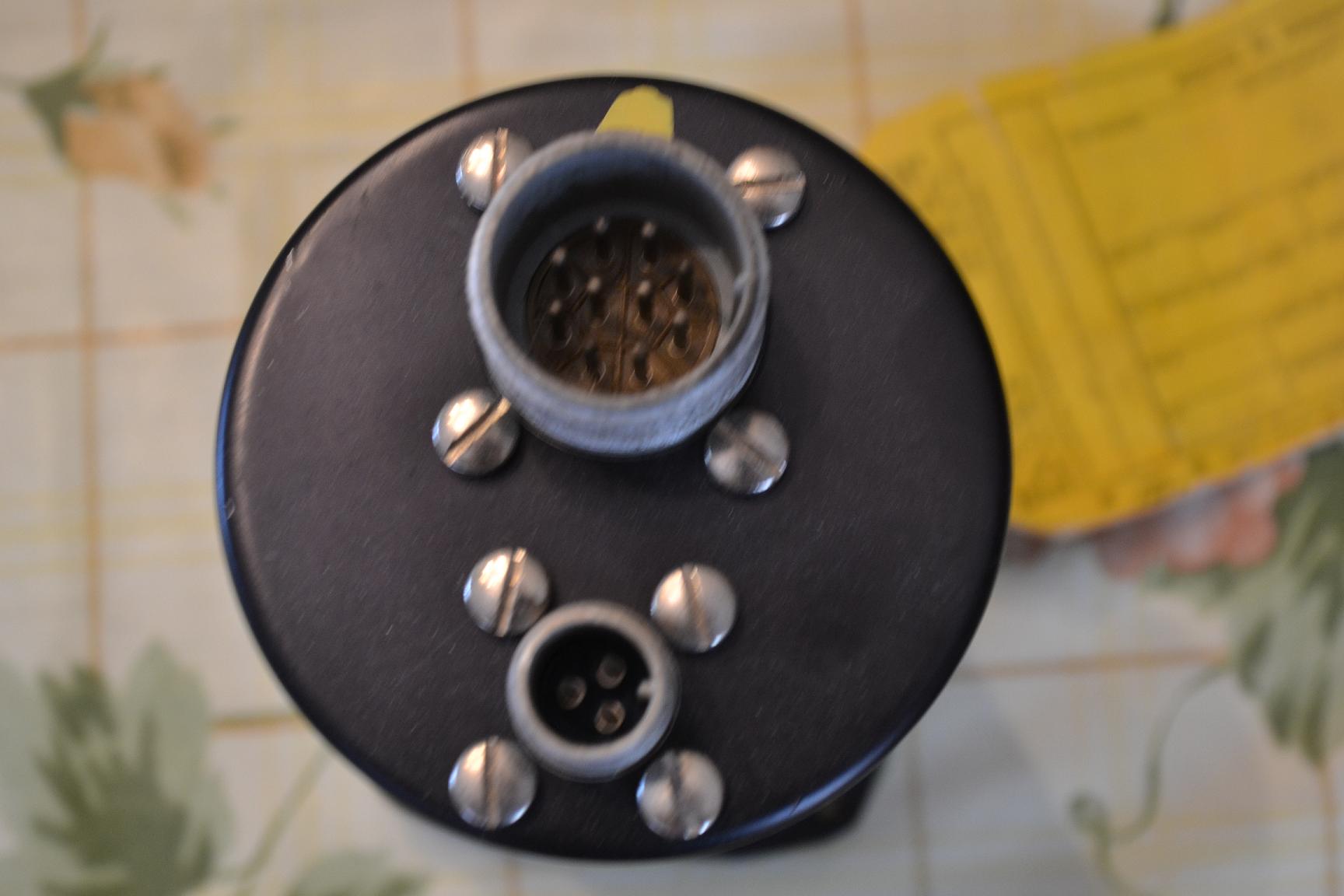
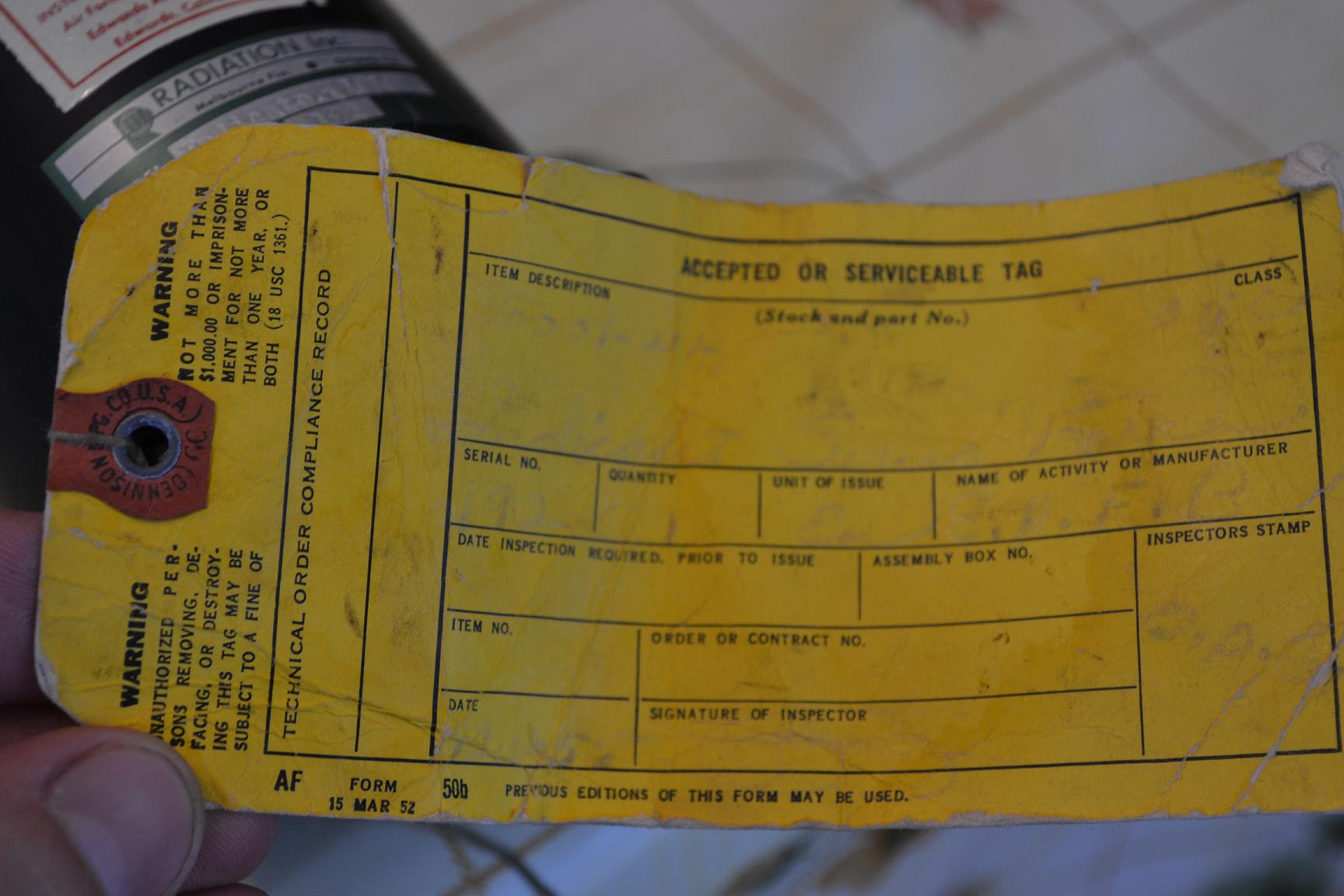
Yellow tag writing is unreadable and very faded pencil marks. I tried every which way to catch a glimpse at what it said.
So I looked at the piece, and right away I was stunned to find where its from. Its serial tag says it was made by Radiation Inc, from Melbourne, FL/Orlando, FL. I read up and found out a little background on the company and it turns out it used to make antenna, integrated circuit, and modem technology used in the space race during the 1950s and 60s. It merged with Harris Corporation in 1967.
Now here are some pics from the company:
www.flickr.com...
Some background:
www.southbrevardhistory.org...
Now, does anyone have any idea what this flight test instrument is, was used for, and what possible aircraft it may have come off of or used in? Zaphod!! Any ideas? I have scoured the net and cannot find anything about it, looked through countless pictures of aircraft cockpits, and even found the entire Radiation Inc. patents page. No luck!
Note to Mods: if this thread belongs somewhere else, then please do move it, I was not sure if this was allowed in this particular part of ATS Aircraft Projects forum, but I figured I could ask since this obviously has a connection to the Edwards AFB test facility and it is a Flight Test Instrument. I do not wish to get in trouble with you guys and gals!
Now, what I have here is a dial obviously taken from an aircraft at some point many years ago. My fiancee found it at a flea market for a couple bucks, knew I was a military buff, and would appreciate an odd aircraft dial. She asked the guy what it was and all he said was it came off an airplane, maybe a military plane. No idea where, how, what or why.


Tag on this one says "Indicator (1040) Serial # 192"
As you can see, the MOST interesting part is the Flight Test Instrument sticker and where it belonged to: Edwards Air Force Base!!



Yellow tag writing is unreadable and very faded pencil marks. I tried every which way to catch a glimpse at what it said.
So I looked at the piece, and right away I was stunned to find where its from. Its serial tag says it was made by Radiation Inc, from Melbourne, FL/Orlando, FL. I read up and found out a little background on the company and it turns out it used to make antenna, integrated circuit, and modem technology used in the space race during the 1950s and 60s. It merged with Harris Corporation in 1967.
Now here are some pics from the company:
www.flickr.com...
Some background:
www.southbrevardhistory.org...
Now, does anyone have any idea what this flight test instrument is, was used for, and what possible aircraft it may have come off of or used in? Zaphod!! Any ideas? I have scoured the net and cannot find anything about it, looked through countless pictures of aircraft cockpits, and even found the entire Radiation Inc. patents page. No luck!
Note to Mods: if this thread belongs somewhere else, then please do move it, I was not sure if this was allowed in this particular part of ATS Aircraft Projects forum, but I figured I could ask since this obviously has a connection to the Edwards AFB test facility and it is a Flight Test Instrument. I do not wish to get in trouble with you guys and gals!
a reply to: GenRadek
It's used to measure rate of climb. On the right you're going up, on the left you're coming down. It's common on sailplanes to look for thermals and help you stay up longer.
It's called a Vertical Speed Indicator (VSI), IIRC.
It's used to measure rate of climb. On the right you're going up, on the left you're coming down. It's common on sailplanes to look for thermals and help you stay up longer.
It's called a Vertical Speed Indicator (VSI), IIRC.
edit on 8/14/2014 by Zaphod58 because: (no reason given)
a reply to: Zaphod58
Cool! What interested me was the Edwards AFB part. Would this have been standard on most aircraft at the time or were they using it on something special?
Since this comes from a company that worked on the early space race and this has markings from the Edwards Flight Test Center, is it possible this may have seen flight time on some of the early aircraft of the time?
Cool! What interested me was the Edwards AFB part. Would this have been standard on most aircraft at the time or were they using it on something special?
Since this comes from a company that worked on the early space race and this has markings from the Edwards Flight Test Center, is it possible this may have seen flight time on some of the early aircraft of the time?
edit on 8/14/2014 by GenRadek because: a better question!
It's a VCI or RCDI. There are some really interesting airframes from that period it may have been from. I'd continue digging
It's a VCI or RCDI. There are some really interesting airframes from that period it may have been from. I'd continue digging
Thats a cool little knick knack!
Nice find
@ the rubbing idea, thats a good way to go.
You could try carbon paper and some tracing paper, it will make the rubbing much more clear if the trace is very faint, you just need to rub a finger over it rather than a pencil and it will show up fairly easy.
Nice find
@ the rubbing idea, thats a good way to go.
You could try carbon paper and some tracing paper, it will make the rubbing much more clear if the trace is very faint, you just need to rub a finger over it rather than a pencil and it will show up fairly easy.
edit on b3535654 by Biigs because: (no reason given)
Word of CAUTION. Most aircraft instruments from that era had radium dials. After many years the radium paint starts to flake and turn into a fine
powder that can be inhaled. It is an extreme cancer risk As an aircraft instrument tech at one point in my career I had to decommission any
instruments that still had radium dials and store them safely for eventual disposal by a specialized company.
Interesting trivia:
en.wikipedia.org...
Interesting trivia:
en.wikipedia.org...
originally posted by: CraftBuilder
Word of CAUTION. Most aircraft instruments from that era had radium dials. After many years the radium paint starts to flake and turn into a fine powder that can be inhaled. It is an extreme cancer risk As an aircraft instrument tech at one point in my career I had to decommission any instruments that still had radium dials and store them safely for eventual disposal by a specialized company.
Interesting trivia:
en.wikipedia.org...
Radium is a extremely small amount same goes for the radium in telescopic sights, its a tiny amount and unless you were literally trying to, inhaling it in extremely unlikely.
I dont really think thats somthing to worry about
a reply to: GenRadek
If you have a good scanner and Photoshop you can play with the levels and get some more contrast out of the writing. If you don't have Photoshop send me a scan and I'll see what I can do.
If you have a good scanner and Photoshop you can play with the levels and get some more contrast out of the writing. If you don't have Photoshop send me a scan and I'll see what I can do.
edit on 14-8-2014 by Sammamishman because: (no reason given)
originally posted by: Sammamishman
a reply to: GenRadek
If you have a good scanner and Photoshop you can play with the levels and get some more contrast out of the writing. If you don't have Photoshop send me a scan and I'll see what I can do.
Good idea.
A decent camera and photoshop can show up things your eyes cant.
If you dont have have photoshop (its expensive) you can use GIMP 2 which is free, its not quite as good but it works pretty well still and you can do some nifty # with it it.
I think I just may have to try a rubbing to see what can come up from the tags.
As for radium, Im not too worried, but I dont sleep next to it either
Thanks for the ideas. I am hoping this might shed some light. I'd love for it to be something really special. Maybe off an X-plane? Wishful thinking I know.
As for radium, Im not too worried, but I dont sleep next to it either
Thanks for the ideas. I am hoping this might shed some light. I'd love for it to be something really special. Maybe off an X-plane? Wishful thinking I know.
It looks a bit like the ones they use in the A-10 and other 70's-80's planes.
Maybe a first gen jet like a tornado or F-14.
Maybe a first gen jet like a tornado or F-14.
originally posted by: Biigs
originally posted by: CraftBuilder
Word of CAUTION. Most aircraft instruments from that era had radium dials. After many years the radium paint starts to flake and turn into a fine powder that can be inhaled. It is an extreme cancer risk As an aircraft instrument tech at one point in my career I had to decommission any instruments that still had radium dials and store them safely for eventual disposal by a specialized company.
Interesting trivia:
en.wikipedia.org...
Radium is a extremely small amount same goes for the radium in telescopic sights, its a tiny amount and unless you were literally trying to, inhaling it in extremely unlikely.
I dont really think thats somthing to worry about
These days it is contained (hopefully) in an encapsulant. During its early use in the aircraft industry it was mixed into paint that eventually deteriorated into powder form. It was enough of a concern that the aircraft industry had to spend hundreds of millions of dollars swapping out instruments with radium dials.
Biigs, what is your source? What are your qualifications? What exactly is the risk? How do you know exactly how much radium was used in that dial? Is it a "tiny amount" Exactly how dangerous is inhaling a tiny amount? "I don't think" doesn't fill me with a whole lot of confidence.
edit on 14-8-2014 by CraftBuilder because: I fixed the quote link.
I know what the weapons guys in the armory told me, i asked them "hey these sights glow is this dangerous" they said technically yes, but its such a
small amount its not an issue.
Same goes for plane dials.
Hell theres radium in most emergency exit signs, its such a tiny amount youd have to practically rub it directly into your eyes to do any harm.
Sure if you worked with it every day there could be some issues, but for a normal "user" theres basically no more risk than working with gas or explosives or whatever. Hell i think working with experimental lasers and such is probably more dangerous. [edit, i know the laser comment is a bit odd but i know many laser technicians who do some weird work]
Same goes for plane dials.
Hell theres radium in most emergency exit signs, its such a tiny amount youd have to practically rub it directly into your eyes to do any harm.
Sure if you worked with it every day there could be some issues, but for a normal "user" theres basically no more risk than working with gas or explosives or whatever. Hell i think working with experimental lasers and such is probably more dangerous. [edit, i know the laser comment is a bit odd but i know many laser technicians who do some weird work]
edit on b0404758 by Biigs because: (no reason given)
originally posted by: Biigs
I know what the weapons guys in the armory told me, i asked them "hey these sights glow is this dangerous" they said technically yes, but its such a small amount its not an issue.
Same goes for plane dials.
Hell theres radium in most emergency exit signs, its such a tiny amount youd have to practically rub it directly into your eyes to do any harm.
Sure if you worked with it every day there could be some issues, but for a normal "user" theres basically no more risk than working with gas or explosives or whatever. Hell i think working with experimental lasers and such is probably more dangerous.
The amount is not the issue. In modern sites the radium is contained properly and the amount of radiation exposure is very small. In old aircraft instruments the radium is not contained by an encapsulent and the paint turns into powder form which becomes suspended in the air.
The amount is not the issue. In modern sites the radium is contained properly and the amount of radiation exposure is very small. In old aircraft instruments the radium is not contained by an encapsulent and the paint turns into powder form which becomes suspended in the air.
I don't think that you are aware that when a radioactive particle sits in the lungs it is a significant cancer risk.
edit on 14-8-2014 by
CraftBuilder because: I added last sentance.
I played around with the pic you provided above:
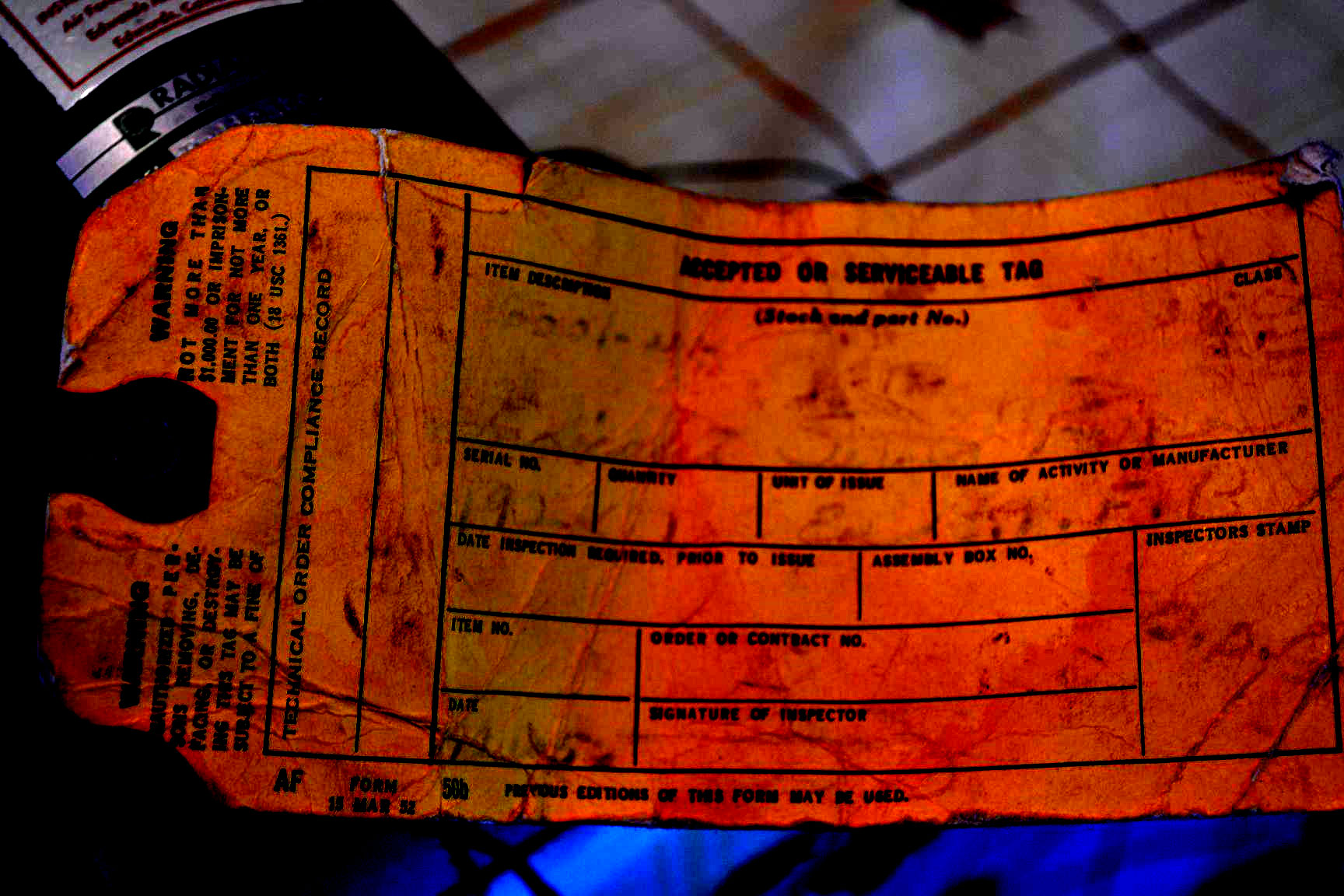
Brought out some text (sort of):
Serial number: 192
Quantity: 1
Unit of issue: Ea
Name of activity or manufacturer: ? . F . R or B.
Date: ?/57 maybe
Inspection stamp: D . P . ?

Brought out some text (sort of):
Serial number: 192
Quantity: 1
Unit of issue: Ea
Name of activity or manufacturer: ? . F . R or B.
Date: ?/57 maybe
Inspection stamp: D . P . ?
new topics
-
Leading Surgeon from Al-Shifa Hospital Dies in Israeli Custody
Middle East Issues: 33 minutes ago -
Zionists of ATS assemble
Political Issues: 4 hours ago -
For Votes - President BIDEN Opens ObamaCare Health Ins to Illegal Aliens Eff Nov 1st 2024.
2024 Elections: 9 hours ago -
EPA sues San Francisco for dumping billions of gallons of sewage into Pacific Ocean
US Political Madness: 9 hours ago -
Prophets versus priests; - Getting God's help
Religion, Faith, And Theology: 11 hours ago
top topics
-
Wounded Orangutan seen using a Plant as Medicine for the First Time
Fragile Earth: 14 hours ago, 17 flags -
Study Finds The More Covid Vaccine Doses You Have, the More Likely You Are to Get Covid
Medical Issues & Conspiracies: 14 hours ago, 14 flags -
Farmers jailed without due process
General Conspiracies: 16 hours ago, 10 flags -
EPA sues San Francisco for dumping billions of gallons of sewage into Pacific Ocean
US Political Madness: 9 hours ago, 9 flags -
For Votes - President BIDEN Opens ObamaCare Health Ins to Illegal Aliens Eff Nov 1st 2024.
2024 Elections: 9 hours ago, 8 flags -
UN Estimates Rebuilding Gaza Will Cost Up To 40 Billion Dollars
Middle East Issues: 13 hours ago, 8 flags -
Democratic Rep. Henry Cuellar and wife indicted on federal bribery charges
US Political Madness: 15 hours ago, 6 flags -
SEC shuts down Trump Media auditor, BF Borgers, over fraud
Mainstream News: 16 hours ago, 5 flags -
An AI-controlled fighter jet took the Air Force leader for a historic ride
Military Projects: 15 hours ago, 4 flags -
Zionists of ATS assemble
Political Issues: 4 hours ago, 4 flags
active topics
-
Leading Surgeon from Al-Shifa Hospital Dies in Israeli Custody
Middle East Issues • 1 • : FlyersFan -
The Acronym Game .. Pt.3
General Chit Chat • 7789 • : bally001 -
Zionists of ATS assemble
Political Issues • 9 • : cherokeetroy -
-@TH3WH17ERABB17- -Q- ---TIME TO SHOW THE WORLD--- -Part- --44--
Dissecting Disinformation • 790 • : daskakik -
UN Estimates Rebuilding Gaza Will Cost Up To 40 Billion Dollars
Middle East Issues • 43 • : Plugit -
An Implausible New Electoral Process?
Political Ideology • 32 • : chr0naut -
Post A Funny (T&C Friendly) Pic Part IV: The LOL awakens!
General Chit Chat • 7152 • : Elentari -
Official denial
Diseases and Pandemics • 27 • : PrivateAngel -
Wounded Orangutan seen using a Plant as Medicine for the First Time
Fragile Earth • 23 • : SprocketUK -
California Must Spend 20 Billion on Power Grid Upgrades If It Wants EVs
Fragile Earth • 28 • : glen200376
